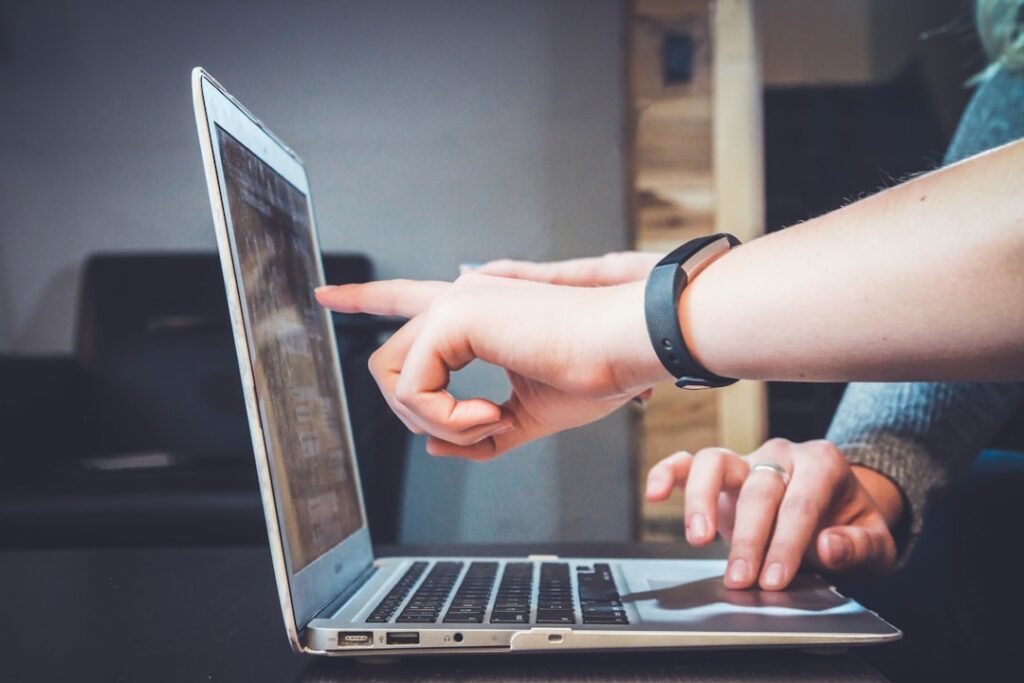The advent of telemedicine has revolutionized the healthcare landscape, particularly in the wake of the COVID-19 pandemic. As healthcare systems faced unprecedented challenges, the need for remote care solutions became paramount. Telemedicine, which encompasses a range of technologies that facilitate remote clinical services, has emerged as a vital tool for healthcare providers.
It allows patients to access medical consultations, follow-ups, and even specialist care from the comfort of their homes. This shift not only enhances patient convenience but also alleviates the burden on healthcare facilities, enabling them to focus on critical cases. The rise of telemedicine is not merely a response to a global health crisis; it represents a fundamental change in how healthcare is delivered.
With advancements in technology, patients can now engage with healthcare professionals through video calls, mobile applications, and secure messaging platforms. This accessibility is particularly beneficial for individuals in rural or underserved areas, where traditional healthcare services may be limited. As telemedicine continues to gain traction, it is essential for healthcare providers to understand its implications and integrate it effectively into their practice.
Key Takeaways
- Telemedicine has seen a significant rise in popularity, especially during the COVID-19 pandemic, as it allows patients to consult with healthcare providers remotely.
- Remote patient monitoring software has revolutionized healthcare by enabling continuous monitoring of patients’ vital signs and health data from their homes, leading to early detection of health issues and improved patient outcomes.
- The benefits of telemedicine and remote patient monitoring include increased access to healthcare, reduced healthcare costs, and improved patient satisfaction.
- Challenges in telemedicine implementation, such as technological barriers and resistance from healthcare providers, can be overcome through proper training, support, and investment in infrastructure.
- Telemedicine and remote patient monitoring are the future of healthcare, offering improved patient outcomes, better chronic disease management, and enhanced security and privacy measures to protect patient data.
Remote Patient Monitoring Software: A Game-Changer in Healthcare
Enhanced Patient Engagement
The integration of RPM software into telemedicine practices not only enhances patient engagement but also improves clinical outcomes. By providing patients with tools to track their health metrics, they become active participants in their care journey, fostering a sense of accountability and encouraging adherence to treatment plans.
Improved Clinical Outcomes
RPM software has been particularly effective in managing chronic conditions such as diabetes and hypertension. By enabling remote monitoring, healthcare providers can intervene promptly when necessary, reducing the risk of complications and improving overall health outcomes.
Reduced Healthcare Costs
The use of RPM software can significantly reduce hospital readmissions and emergency room visits by enabling timely interventions based on real-time data analysis. This shift towards patient-centered care not only improves health outcomes but also reduces healthcare costs, making it a valuable tool in the telemedicine framework.
The Benefits of Telemedicine and Remote Patient Monitoring

The benefits of telemedicine and remote patient monitoring are manifold, extending beyond mere convenience. One of the most significant advantages is improved access to care. Patients who may have previously faced barriers such as transportation issues or long wait times can now receive timely medical attention without leaving their homes.
This accessibility is particularly crucial for vulnerable populations, including the elderly and those with mobility challenges. Additionally, telemedicine and RPM contribute to cost savings for both patients and healthcare systems. By reducing the need for in-person visits, healthcare providers can optimize their resources and minimize overhead costs associated with maintaining physical facilities.
Patients also benefit from reduced travel expenses and time off work, making healthcare more affordable and accessible. Furthermore, the ability to monitor patients remotely can lead to early detection of potential health issues, ultimately resulting in lower overall healthcare costs.
Overcoming Challenges in Telemedicine Implementation
| Challenges | Metrics |
|---|---|
| Internet Connectivity | Percentage of patients with reliable internet access |
| Technology Literacy | Number of patients requiring assistance with telemedicine platforms |
| Regulatory Compliance | Percentage of telemedicine practices meeting legal requirements |
| Privacy and Security | Number of reported data breaches or privacy violations |
| Reimbursement Policies | Percentage of telemedicine services reimbursed by insurance providers |
Despite its numerous advantages, the implementation of telemedicine and remote patient monitoring is not without challenges. One significant hurdle is the variability in reimbursement policies across different payers. While some insurance companies have embraced telehealth services, others remain hesitant, leading to confusion among providers and patients regarding coverage options.
To navigate this landscape effectively, healthcare organizations must stay informed about evolving reimbursement policies and advocate for equitable coverage of telehealth services. Another challenge lies in ensuring that both patients and providers are adequately trained in using telemedicine technologies. A lack of familiarity with digital tools can hinder effective communication and limit the potential benefits of remote care.
Healthcare organizations should invest in comprehensive training programs that equip staff with the necessary skills to utilize telehealth platforms effectively. Additionally, patient education is crucial; providing clear instructions on how to access telemedicine services can enhance patient engagement and satisfaction.
Telemedicine and Remote Patient Monitoring: The Future of Healthcare
As we look toward the future, telemedicine and remote patient monitoring are poised to play an increasingly central role in healthcare delivery. The ongoing advancements in technology, such as artificial intelligence (AI) and machine learning, are set to enhance the capabilities of telehealth platforms further. For instance, AI algorithms can analyze vast amounts of patient data to identify trends and predict potential health issues before they escalate.
This proactive approach to healthcare will enable providers to deliver more personalized and effective care. Moreover, the integration of wearable devices into telemedicine practices is expected to gain momentum. These devices can continuously monitor various health parameters, providing valuable data that can be shared with healthcare providers in real time.
As patients become more health-conscious and technology-savvy, the demand for remote monitoring solutions will likely increase. This trend will not only empower patients but also enable healthcare systems to transition towards a more preventive model of care.
How Telemedicine and Remote Patient Monitoring Improve Patient Outcomes

Early Intervention and Better Disease Management
For example, patients with heart failure can be monitored remotely for changes in weight or blood pressure, allowing for prompt adjustments to their treatment plans before complications arise.
Empowering Patients through Continuous Engagement
Furthermore, the continuous engagement fostered by RPM encourages patients to take an active role in managing their health. Regular feedback from healthcare providers based on real-time data can motivate patients to adhere to prescribed treatment regimens and lifestyle modifications.
Improved Clinical Outcomes and Patient Satisfaction
This collaborative approach not only enhances patient satisfaction but also leads to improved clinical outcomes, as evidenced by studies showing reduced hospitalizations and better disease control among patients utilizing telehealth services.
The Role of Telemedicine in Chronic Disease Management
Chronic disease management is one area where telemedicine has proven particularly beneficial. Conditions such as diabetes, hypertension, and asthma require ongoing monitoring and management to prevent complications. Telemedicine facilitates regular check-ins between patients and healthcare providers, allowing for timely adjustments to treatment plans based on real-time data from remote monitoring devices.
For instance, diabetic patients can use continuous glucose monitors that transmit data directly to their healthcare team. This enables providers to make informed decisions regarding insulin dosage or dietary recommendations without requiring frequent office visits. Additionally, telemedicine allows for educational sessions on self-management techniques, empowering patients with the knowledge they need to take control of their health.
Ensuring Security and Privacy in Telemedicine and Remote Patient Monitoring
As telemedicine continues to expand, ensuring the security and privacy of patient data remains a top priority for healthcare organizations. The sensitive nature of health information necessitates robust cybersecurity measures to protect against data breaches and unauthorized access. Compliance with regulations such as the Health Insurance Portability and Accountability Act (HIPAA) is essential for safeguarding patient information during virtual consultations and remote monitoring.
Healthcare organizations must implement comprehensive security protocols that include encryption of data transmissions, secure user authentication methods, and regular security audits. Additionally, educating staff about best practices for data protection is crucial in fostering a culture of security within the organization. By prioritizing cybersecurity measures, healthcare providers can build trust with patients while ensuring compliance with regulatory standards.
In conclusion, the rise of telemedicine and remote patient monitoring represents a significant advancement in healthcare delivery. By addressing key challenges through effective implementation strategies and prioritizing security measures, healthcare organizations can harness the full potential of these technologies. As we move forward into an era where digital health solutions are increasingly integrated into everyday practice, it is imperative for healthcare professionals to stay informed about emerging trends and best practices.
By doing so, they can enhance patient outcomes while navigating the complexities of modern healthcare delivery effectively.
Telemedicine and remote patient monitoring software have revolutionized the way healthcare is delivered, allowing patients to receive medical care from the comfort of their own homes. This technology has become even more crucial in light of the COVID-19 pandemic, as it allows for safe and efficient healthcare delivery. For more information on how IT support can benefit healthcare practices, check out this article on how dental IT support works.
FAQs
What is telemedicine?
Telemedicine is the use of technology to provide remote healthcare services to patients. This can include video consultations, remote monitoring of vital signs, and the exchange of medical information.
What is remote patient monitoring software?
Remote patient monitoring software allows healthcare providers to monitor patients’ health data remotely. This can include vital signs, medication adherence, and other important health information.
How does telemedicine and remote patient monitoring software work together?
Telemedicine and remote patient monitoring software work together to provide healthcare services to patients from a distance. Patients can use remote monitoring devices to track their health data, which can then be shared with healthcare providers during telemedicine consultations.
What are the benefits of telemedicine and remote patient monitoring software?
Some benefits of telemedicine and remote patient monitoring software include increased access to healthcare for patients in remote or underserved areas, reduced healthcare costs, and the ability to monitor and manage chronic conditions more effectively.
Is telemedicine and remote patient monitoring software secure?
Telemedicine and remote patient monitoring software must adhere to strict security and privacy regulations, such as HIPAA in the United States, to ensure the protection of patients’ health information. Encryption and other security measures are used to keep patient data safe.


